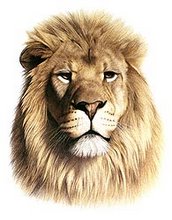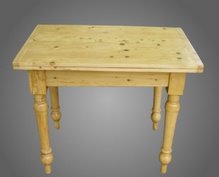↓B. Lektion 1. ↔︎ Lektion 3.
/Home: 2. Ein Date.
LEKTION 2/i.en/Basic 1.
f/1
| Home - Gr2 - Lek2 - Stories - Duo - |
| Words/312 - GP101 - TLde - Pint/2 - Verbi - Lezioni - Fonti didattiche - |
1. A date. - 2. Ein Date. - 3. Julia hat ein Date. - 4. Hallo, wie geht's? - 5. Gut, danke! - 6. Was möchtest du essen? - 7. Einen Salat. - 8. Ich esse kein Fleisch. - 9. Bist du Vegetarierin? - 10. Ja. - 11. Ich auch. - 12. Super! - 13. Woher kommst du? - 14. Aus Frankreich. - 15. Mein Vater kommt aus Italien… - 16. …und meine Mutter kommt aus Deutschland. - 17. Ich komme auch aus Italien. - 18. Italien ist schön! - 19. Hast du Hunde oder Katzen? - 20. Ich habe eine Katze und einen Hund. - 21. Ah, toll! - 22. Ich habe auch einen Hund, Katrin! - 23. Was? Ich heiße Julia! - 24. Und mein date heißt Felix… - 25. Hm. - 26. Ich heiße Daniel. - 27. Eine Frau kommt zu Daniel. - 28. Entschuldigung, bist du Daniel? Ich bin Katrin. - 29. Nein, tut mir leid. Ich bin Felix.
• Hunde: dogs. - 1. die Hunde trinken Wasser: the dogs drink water; 2. die Hunde fressen Brot: the dogs eats bread; 3. die Hunde trinken: the dogs drink; -
Gr2.
Example: trinken (to drink)
Lek2. - ↓B. Top. ↑Gr2.
Welcome to German :)
Welcome to the German course! We will provide you with tips and notes
throughout the course. However, be aware that these are optional. Only
read them when you feel stuck, or when you are interested in the
details. You can use the course without them.
Often, it's best to just dive into the practice. See how it goes! You can always revisit the Notes section later on.
Often, it's best to just dive into the practice. See how it goes! You can always revisit the Notes section later on.
Capitalizing nouns
In German, all nouns are capitalized. For example, "my name" is mein Name, and "the apple" is der Apfel. This helps you identify which words are the nouns in a sentence.
German genders are strange
Nouns in German are either feminine, masculine or neuter. For example, Frau (woman) is feminine, Mann (man) is masculine, and Kind (child) is neuter.
While some nouns (Frau, Mann, …) have natural gender like in English (a woman is female, a man is male), most nouns have grammatical gender (depends on word ending, or seemingly random).
For example, Mädchen (girl) is neuter, because all words ending in -chen are neuter. Wasser (water) is neuter, but Cola is feminine, and Saft (juice) is masculine.
It is important to learn every noun along with its gender because parts of German sentences change depending on the gender of their nouns.
For now, just remember that the indefinite article (a/an) ein is used for masculine and neuter nouns, and eine is used for feminine nouns. Stay with us to find out how "cases" will later modify these.
While some nouns (Frau, Mann, …) have natural gender like in English (a woman is female, a man is male), most nouns have grammatical gender (depends on word ending, or seemingly random).
For example, Mädchen (girl) is neuter, because all words ending in -chen are neuter. Wasser (water) is neuter, but Cola is feminine, and Saft (juice) is masculine.
It is important to learn every noun along with its gender because parts of German sentences change depending on the gender of their nouns.
For now, just remember that the indefinite article (a/an) ein is used for masculine and neuter nouns, and eine is used for feminine nouns. Stay with us to find out how "cases" will later modify these.
| gender | indefinite article |
|---|---|
| masculine | ein Mann |
| neuter | ein Mädchen |
| feminine | eine Frau |
Verb conjugations
Conjugating regular verbs
Verb conjugation in German is more complex than in English. To conjugate a regular verb in the present tense, identify the stem of the verb and add the ending corresponding to any of the grammatical persons, which you can simply memorize. For now, here are the singular forms:Example: trinken (to drink)
| English person | ending | German example |
|---|---|---|
| I | -e | ich trinke |
| you (singular informal) | -st | du trinkst |
| he/she/it | -t | er/sie/es trinkt |
Conjugations of the verb sein (to be)
Like in English, sein (to be) is completely irregular, and its conjugations simply need to be memorized. Again, you will learn the plural forms soon.| English | German |
|---|---|
| I am | ich bin |
| you (singular informal) are | du bist |
| he/she/it is | er/sie/es ist |
Umlauts
Umlauts are letters (more specifically vowels) that have two dots above them and appear in some German words like Mädchen.
Literally, "Umlaut" means "around the sound," because its function is to change how the vowel sounds.
An umlaut change may change the meaning. That's why it's important not to ignore those little dots.
If you can't type these, a workaround is to type "oe" instead of "ö", for example.
Literally, "Umlaut" means "around the sound," because its function is to change how the vowel sounds.
| no umlaut | umlaut |
|---|---|
| a | ä |
| o | ö |
| u | ü |
If you can't type these, a workaround is to type "oe" instead of "ö", for example.
No continuous aspect
In German, there's no continuous aspect. There are no separate forms for "I drink" and "I am drinking". There's only one form: Ich trinke.
There's no such thing as Ich bin trinke or Ich bin trinken!
When translating into English, how can I tell whether to use the simple (I drink) or the continuous form (I am drinking)?
Unless the context suggests otherwise, either form should be accepted.
There's no such thing as Ich bin trinke or Ich bin trinken!
When translating into English, how can I tell whether to use the simple (I drink) or the continuous form (I am drinking)?
Unless the context suggests otherwise, either form should be accepted.
LEKTION 2/i.en/Basic 1.
 |
| das Notizheft: 26-01-20 - |
1. A child. Ein Kind. - 2. Er, sie, es: he, she, it. - 3. I am a woman. Ich bin eine Frau. - 4. Brot und Wasser. Bread and water. - 5. I am a boy. Ich bin ein Junge. - 6. Es ist Brot. It is bread. - 7. er, sie, es: he, she, it. - 8. Du bist ein Junge. You are a boy. - 9. Es ist Wasser. It is water. - 10. I am a boy. Ich bin ein Junge. - 11. Bread and water. Brot un Wasser. - 12. You are a boy. Du bist ein Junge. - 13. Es ist Brot. It is bread. - 14. I am a man. Ich bin ein Mann. - 15. Brot, Wasser. Bread, water. - 16. It is bread. Es ist Brot. - 17. You are a child. Du bist ein Kind. - 18. It is a child. Es ist ein Kind. - 19. Bread and water. Brot und Wasser. - 20. Bread, water. Brot, Wasser. –
• das Notizheft, notebook, noun. a. Der Mann schreibt in das Notizheft: The man is writing in the notebook; b. Ich habe für jeden Kurs ein eigenes Notizheft: I have a separate notebook for each class; c. weiß liniertes Notizheft: white lined notebook; d. Notizheft für ein Fach: one subject notebook.
• die Ferien, vacatio, noun. 01-02-20.
– In Deutschland hat man länger Ferien als in Amerika.
f/2
• das Notizheft, notebook, noun. a. Der Mann schreibt in das Notizheft: The man is writing in the notebook; b. Ich habe für jeden Kurs ein eigenes Notizheft: I have a separate notebook for each class; c. weiß liniertes Notizheft: white lined notebook; d. Notizheft für ein Fach: one subject notebook.
• die Ferien, vacatio, noun. 01-02-20.
– In Deutschland hat man länger Ferien als in Amerika.
- Vacations in Germany are longer than in the US.
 |
| übersetzen: 02-02-20 - |
21. He drinks. Er trinkt. - 22. Ich bin ein Junge und du bist ein Mann. - 23. Sie ist eine Frau und er ist ein Mann. She is a woman and he is a man. - 24. water, Wasser. - 25. Brot und Wasser. Bread and water. - 26. Does he drink? - 27. Ich bin ein Mädchen und du bist eine Frau. I am a girl and you are a woman. - 28. Brot und Wasser. Bread and water. - 29. Es ist Wasser. It is water. - 30. Brot, Wasser. Bread, water. - 31. I am a boy. Ich bin ein Junge. - 32. Maria, due bist eine Frau. Maria, you are a woman. - 33. Bread and water, Brot and Wasser. - 34. Es ist Brot. It is bread. - 35. It is bread. Es ist Brot. - 36. Trinkt sie? Does she drink? Is she drinking? - 37. He is a boy. Er ist ein Junge. - 38. Es ist Wasser. It is water. - 39. You are a woman and I am a man. Du bist eine Frau und Ich bin ein Mann. - 40. Does he drink? Trinkt er? -
• übersetzen, translate, verb. a. von Englisch nach Französisch übersetzen: translate from English to French. -
g/DeA/20.
1. Wer war das, der gerade angerufen hat? - 2. Das war Herr Friedrich. - 3. Was hat er gesagt? - 4. Daß er morgen vormittag kommt. - 5. Mit welchem Zug? - 6. Mit dem um Uhr 10 am Hauptbahnof. - 7. Wer war das, der gerade angerufen hat? - 8. Das war Herr Friedrich. - 9. Was hat er gesagt? - 10. Daß er morgen vormittag kommt. - 11. Mit welchen Zug? - 12. Mit dem um 9 Uhr 10 am Hauptbanhof. - 13. Wer ist Herr Friedrich? - 14. Das ist der Ingenieur, der in dem Werk im Regensburg anfängt. - 15. Ist er tüchtig? - 16. Ja, er ist zehn Jahre Vetriebschef bei ESSO. - 17. Wie alt ist er? - Ich weiß nicht... So ungefähr 40 Jahre. - 18. - 19. Wer ist Herr Friedrich? - 20. Das ist der Ingenieur, der in dem Werk in Regensburg anfängt. - 21. Ist er tüchtig? - 22. Ja, er war zehn Jahre Vetriebschef bei ESSO. - 23. Wie alt ist er? 24. Ich weiß nicht... So ungefähr 40 Jahre. - 25. Kann deine Schwester mir einen Gefallen tun und Monika etwas ausrichten? - 26. Ja, wenn sie sie sieht. Frag sie doch! - 27. Brigitte, siehst du Monika morgen? - 28. Bestimmt, ich sehe sie fast jeden Tag. - 29. Warum? Soll ich ihr etwas ausrichen? - 30. Sag ihr, sie möchte mich bitte morgen abend anrufen. -







Nessun commento:
Posta un commento